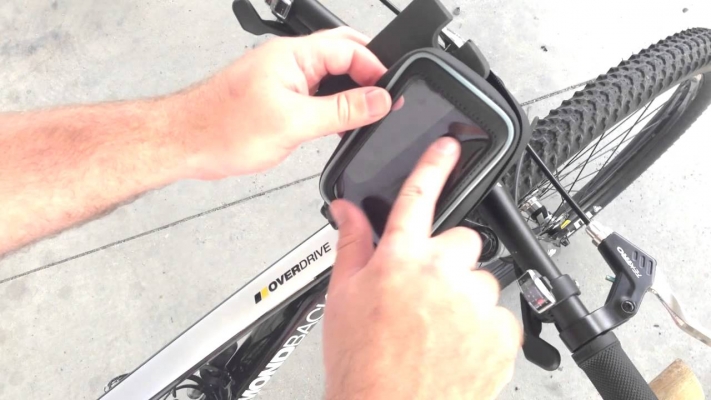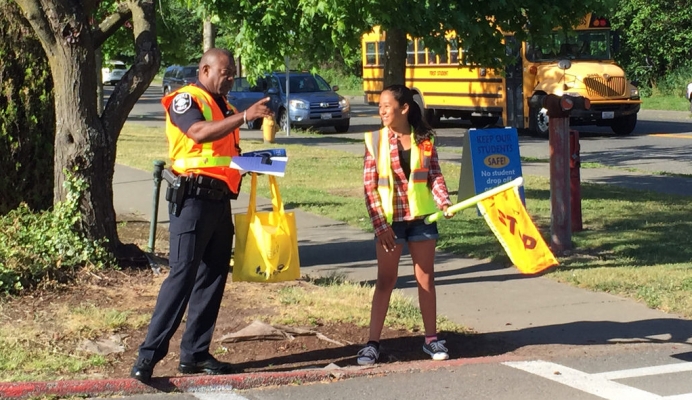View slides
Watch video:
Some researchers have tried to categorize cyclists’ levels of traffic stress utilizing facility or traffic data that can be readily measured in the field, such as motorized travel lanes, travel speeds, and type of bicycle infrastructure.
This seminar will present data and modeling results utilizing two novel data sources:
(a) real-world, on-road measurements of physiological stress as cyclists...
Read moreThe video begins at 1:39.
View slides
Ronald Tamse is a traffic engineer for the city of Utrecht, The Netherlands. Ronald has been involved in traffic design in Amsterdam and Utrecht. He is most interested in bicycle and rail transportation. He has worked on the design of the Amsterdam subway, a light rail system in Utrecht, and is currently working on urban transportation solutions as Utrecht Centraal is redeveloped. Utrecht Centraal is the largest train station in The Netherlands.
Ronald will highlight key examples from Utrecht that show some new ideas, similarities between the Dutch and American approaches, as well as a few lessons imported from Portland. These examples will share highlights from major projects that include building a new commuter railway network, including the rebuilding of Utrecht Centraal railway station, and the development of a light rail line in Utrecht that uses MAX as a development model. In addition, Ronald will demonstrate the importance of connecting bike infrastructure through network planning, infrastructure, and connections to transit.
Watch video
View slides
ORcycle is a new smartphone application (for both Android and iOS) developed by Transportation, Technology, and People (TTP) lab researchers at Portland State University as part of an Oregon Department of Transportation (ODOT) research project. ORcycle collects user, route, infrastructure, crash, and safety data. ORcycle was successfully launched in early November 2014 and presents many improvements over existing or similar apps. Initial data findings and insights will be presented. Lessons learned as well as opportunities and challenges associated with smartphone data collection methods will be discussed. More information about the app can be found here: http://www.pdx.edu/transportation-lab/orcycle
Read moreWatch video:
Many cities are considering pursuing Vision Zero to eliminate traffic deaths, but may not know how to move beyond addressing past crash locations toward preventing future crashes. Systemic analysis, which looks at crash patterns to determine common characteristics associated with various types of crashes, shows promise in helping cities to identify problematic locations and...
Read moreWatch video
View slides
Transportation and Road Weather
Where: Room 204 of the Distance Learning Center Wing of the Urban Center at PSU
Speaker: Rhonda Young, University of Wyoming
Topic: Transportation and Road Weather
Summary: Weather has a tremendous impact on the transportation system and is one of the largest contributors to non-recurring delay and increased crashes. Road weather is the a multidisciplinary area involving transportation engineers and meteorologists who are working to mitigate the negative effects of weather on the operation and maintenance practices of transportation systems. The talk covers the broad types of issues being studied in this field and looks at ways in which technology is playing a large part in the proposed solutions. The issue of weather as a complicating factor in the use of connected and autonomous vehicle technologies is also discussed.
Bio: Rhonda Young is an associate professor in the Department of Civil and Architectural Engineering at the University of Wyoming since 2002 and teaches graduate and undergraduate classes in Traffic Operations, Transportation Planning, Transportation Design and Traffic Safety. She completed her master and PhD degrees in Civil Engineering at the University of Washington and...
Read moreThe video begins at 2:59.
Abstract: The New Energy Vehicles (NEVs) industry has become one of the national strategically rising industries in China under the pressure of energy safety and environment protection. In order to promote the use of new energy vehicles, China is now launching a big campaign, called "New Energy Vehicle 'Ten Cities & Thousand Units Demonstration' Plan". This presentation will be focused on the background, progress and some key issues to be addressed during the implementation of the demonstration plan. Specific cases of Shanghai, including the Expo demonstration and Chongming Island demonstration will also be mentioned.
View slides
Watch video:
Car crashes are still a leading cause of death in the United States, with vulnerable road users like bicyclists and pedestrians being injured or killed at rates that outpace their mode share.
Planners, engineers, and advocates are increasingly adopting Vision Zero and Tactical Urbanism approaches and trying to better understand the underlying causes...
Read moreWatch video
View slides
Summary: Cycling is on the rise across the U.S. and its popularity has grown beyond the usual leaders - Portland, OR, Seattle, WA, Davis, CA, Minneapolis, MN and Boulder, CO. New York City, NY Chicago, IL and Washington, DC are among those cities making significant investments in bike infrastructure in recent years and have realized substantial growth in people taking to the streets on two wheels. This presentation will summarize some results from our comprehensive assessment of the safety, operations, economic impacts, user experience, and perceptions of new protected bikeways in 5 cities U.S. cities (Austin, TX; Chicago, IL; Portland, OR; San Francisco, CA; and Washington, D.C.). To support this research, the team collected and analyzed 204 hours of video, 2,300 returned surveys of residents, and 1,111 returned surveys from people intercepted riding the new facilities.
Bios: Dr. Christopher M. Monsere is an Associate Professor of Civil and Environmental Engineering in the Maseeh College of Engineering & Computer Science at Portland State University. Dr. Monsere’s primary research interests are in the areas of multimodal transportation safety; management and dissemination of large transportation datasets; and improvements in transportation...
Read more


